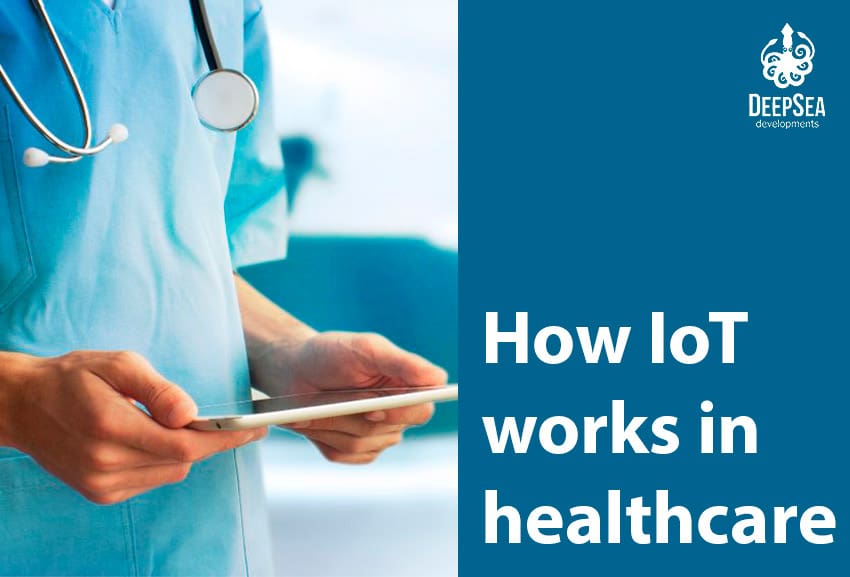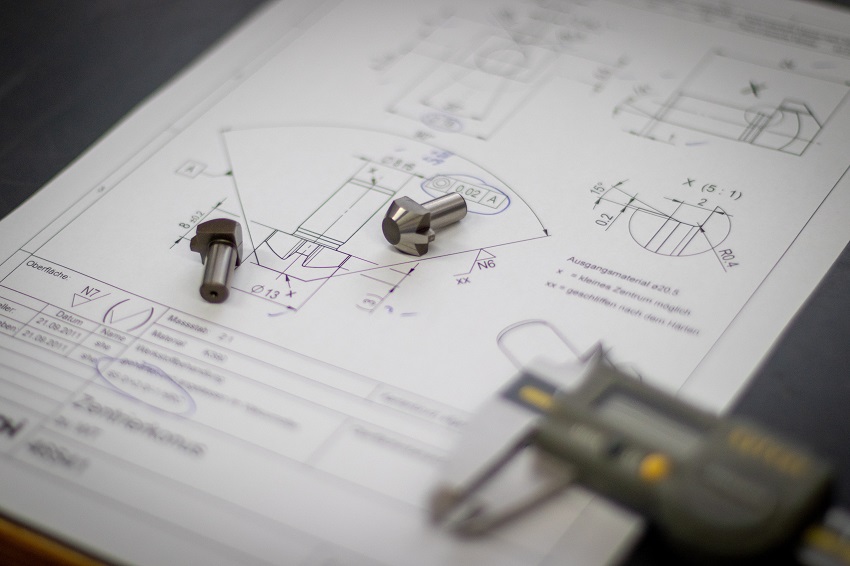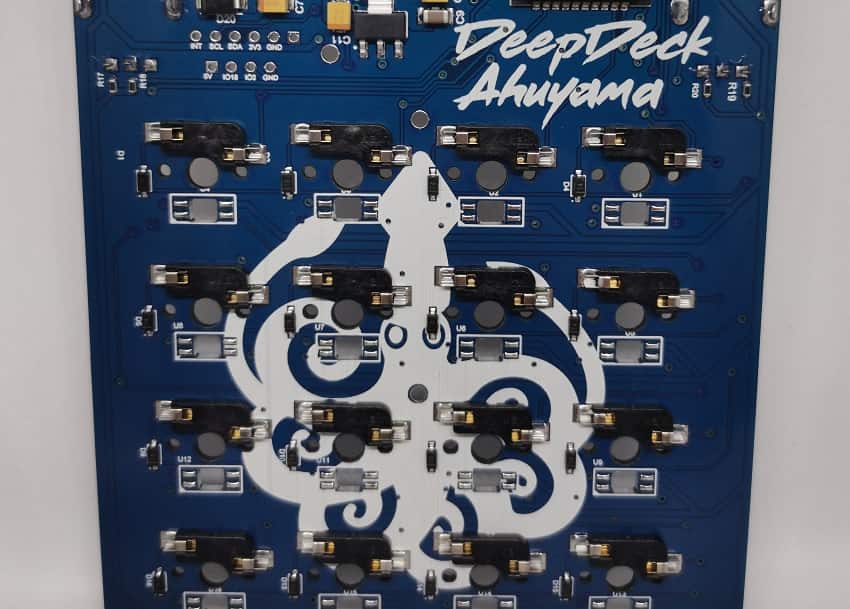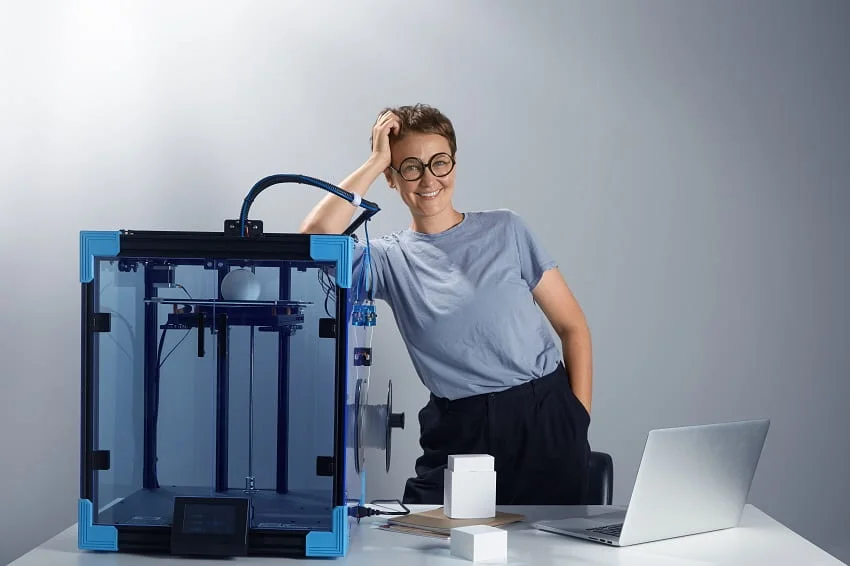The importance of the Internet of Things (IoT) has revolutionized many industries, including healthcare. We already know that IoT products allow the connection of devices, sensors, and systems that are capable of collecting and transmitting data in real-time. Let’s see how IoT works in healthcare.
IoT for healthcare works by connecting various devices and systems that are used in hospitals and healthcare to a network. These devices and systems include wearables, monitors, IoT sensors, medical devices, and electronic health records (EHRs).
IoT health devices have the capacity to collect and transmit data in real-time to the health professional in the hospital or clinic. This means they will count on accurate and up-to-date information about a patient’s health status.
How IoT helps in healthcare
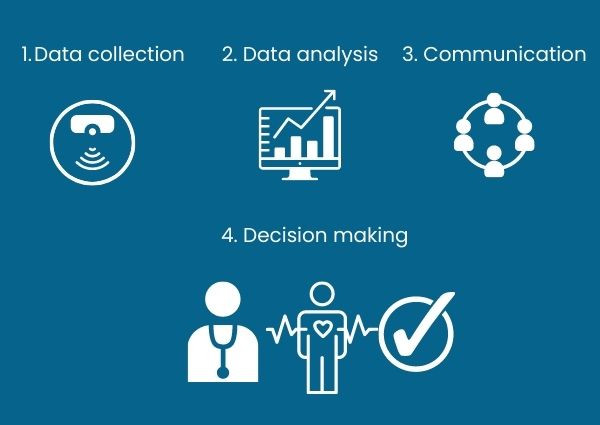
Thanks to healthcare development services, we can see several healthcare devices in hospitals and homes that contribute to improving the healthcare system.
There is an effective and simple process in which IoT in the healthcare system provides valuable information to both patients and health professionals.
1. Data collection
Internet of Things healthcare starts by collecting data. This data is collected through various sensors and devices that the patient is constantly wearing. The data collected may include the patient’s vitals, such as heart rate, blood pressure, and respiratory rate. It may also include information about a patient’s activity levels, and sleep patterns.
The correct data collection depends on good electronic prototyping services. If the different components of the IoT medical device are not well configured, or they lack good performance, the data collection may not be reliable.
2. Data analysis
Once data has been collected, it is analyzed using various algorithms and machine learning techniques. This is possible thanks to the different cloud computing platforms, firmware and software that are connected to the IoT medical device.
IoT for hospitals needs to be reliable, there must be a platform that is in the capacity to process all data and provide the best information to the health professionals.
3. Data transmission
The final step that explains how IoT works in healthcare is data transmission. The data collected and analyzed is transmitted in real-time to healthcare professionals, they can visualize such information in smartphones, tablets, or PCs.
Multiplatform is common for IoT in healthcare industry, and this capability allows healthcare providers to access patient data anytime, anywhere; this is a great benefit for improving patient care.
Once the data is displayed, healthcare professionals can get a clear picture on the patient’s health status, allowing them to make informed decisions about their care.
For instance, if an IoT medical device shows a patient’s heart rate is consistently high, healthcare providers may be alerted to a potential problem and can intervene before a more serious issue occurs.
If you want to know what data can be displayed, check these IoT healthcare examples.
How is IoT in Hospitals being used
IoT in hospitals is crucial for enhancing patient care and improving efficiency. Here are some examples of how IoT is being used in hospitals:
Remote Patient Monitoring
Remote patient monitoring is one way smart health using IoT is useful for healthcare professionals. This remote monitoring can be done by using wearables and other IoT devices installed on every room.
This is really useful for patients with chronic conditions who require ongoing monitoring.
Patient Safety
IoT technology for hospitals may improve patient safety. For instance, sensors can be placed on patients’ beds to detect if they are at risk of falling. So, alerts can be sent to the nurse or doctor.
The oxygen devices also can trigger alerts when the patient presents atypical oxygen levels or if it detects the oxygen is running out.
Electronic Health Records (EHRs)
Besides remote patient monitoring, and taking care of their safety, there is a new way of generating personal records, that is, electronic health records (EHRs). These allow healthcare providers to access patient data from anywhere, the most outstanding part here is that EHRs are possible thanks to the growth of IoT medical devices in hospitals.
The IoT technology opens many possibilities to measure several vitals from each patient, which contributes to customizing even more the different medical treatments.
Asset Tracking
It is worth mentioning that IoT devices in hospitals also work as asset trackers. That is possible thanks to the different sensors and electronic components that maintain a constant connection between the device and the platform that receives the data.
These IoT medical products allow hospitals to keep track of their inventory and ensure that equipment is available when needed. Asset tracking also helps hospitals to identify equipment that may need maintenance or replacement, reducing potential issues with the patients or the normal operations of the hospital.
You already know how IoT works in healthcare. There are many benefits of integrating healthcare solutions in this area, however, there is still a lot to be done.
The impact of IoT in healthcare is big, and there are many startups working on medical prototyping, this is because they see the potential of this market. Also, it is important to analyze the different IoT business models in order to know how to make a profit from your IoT device in healthcare.
Are you interested in developing IoT medical devices? Click on the button below and book a free consultation now.

